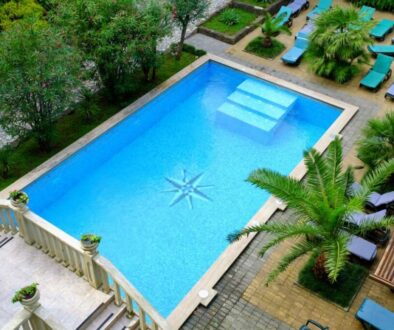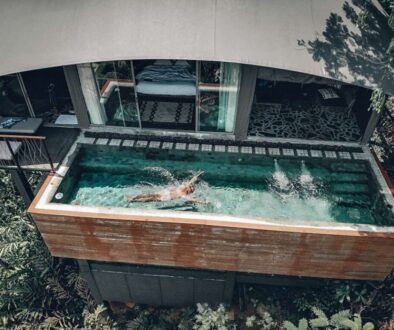A healthy customer-to-tech ratio is essential for maintaining efficiency and service quality in the pool maintenance industry. Learn what the ideal ratio is and how to achieve it!
What’s a Healthy Customer-to-Tech Ratio?
In today’s competitive pool maintenance industry, understanding the dynamics of your business operations can significantly impact your success. One key metric that often goes unnoticed is the customer-to-tech ratio. This ratio not only affects your operational efficiency but also determines the quality of service you provide to your clients. In this blog post, we will delve into what constitutes a healthy customer-to-tech ratio, its importance, and how you can optimize it for maximum efficiency.
Introduction
Before diving into the specifics, it’s crucial to grasp why the customer-to-tech ratio matters. For pool service businesses, this ratio reflects how many customers each technician is responsible for, impacting everything from service quality to employee satisfaction and customer retention. A well-balanced ratio ensures that technicians are not overwhelmed, enabling them to deliver consistent, high-quality service. Conversely, a poor ratio can lead to burnout among staff, dissatisfied customers, and ultimately, a decline in business performance.
As we explore this topic, we will discuss the factors that contribute to an ideal customer-to-tech ratio, the implications of having too few or too many technicians, and best practices for maintaining a healthy balance in your pool service operations. Moreover, we’ll leverage insights from industry professionals to provide a comprehensive view of this crucial operational metric.
The Ideal Customer-to-Tech Ratio
To determine a healthy customer-to-tech ratio, it’s essential to evaluate the operational capacity of your business. On average, a customer-to-tech ratio of 15 to 20 customers per technician is considered optimal in the pool service industry. This range allows technicians to manage their workloads effectively while maintaining high service standards.
Several factors influence this ideal ratio, including the complexity of the services provided, the geographical area serviced, and the experience level of the technicians. For instance, if your business offers a broader range of services, such as maintenance, repairs, and seasonal preparations, a lower customer-to-tech ratio may be necessary to ensure comprehensive service delivery. Conversely, businesses focusing solely on routine maintenance might manage a higher ratio without sacrificing service quality.
Implications of a Poor Customer-to-Tech Ratio
Understanding the ramifications of an imbalanced customer-to-tech ratio is critical for pool service businesses. If the ratio skews too far towards customers, technicians may find themselves overwhelmed, leading to several negative outcomes. These can include:
- Decreased Service Quality: When technicians are stretched thin, they may rush through jobs, resulting in subpar service. This can lead to increased customer complaints and damage to your business reputation.
- Employee Burnout: Overworked technicians can experience burnout, leading to high turnover rates. Replacing staff is costly and can disrupt service continuity.
- Customer Attrition: Customers expect prompt and reliable service. If they feel neglected due to long wait times or inadequate service, they may choose to take their business elsewhere.
Conversely, having too many technicians relative to customers can lead to inefficiencies and increased operational costs. It’s essential to strike a balance that fosters a productive work environment while ensuring customer satisfaction.
Strategies for Achieving a Healthy Customer-to-Tech Ratio
To optimize your customer-to-tech ratio, consider implementing the following strategies:
- Regularly Assess Your Workload: Conduct periodic assessments of your technicians’ workloads to ensure they are manageable. Use metrics such as average job duration and customer feedback to gauge performance.
- Invest in Training: Well-trained technicians can handle more customers effectively. Providing comprehensive training helps them develop the skills needed to manage their time and resources efficiently.
- Utilize Technology: Leverage scheduling and route optimization software to streamline operations. This can help reduce travel time and improve the efficiency of service delivery.
- Focus on Customer Retention: Build strong relationships with existing customers through regular follow-ups, promotions, and loyalty programs. A loyal customer base means less effort is required to attract new clients.
- Adjust Staffing Levels Accordingly: As your customer base grows, be prepared to hire additional technicians to maintain a healthy ratio. This proactive approach ensures that your service levels remain high.
By implementing these strategies, you can create an operational environment conducive to high-quality service delivery and employee satisfaction.
Impact of Geography on the Customer-to-Tech Ratio
Geographical factors can significantly influence the ideal customer-to-tech ratio in the pool maintenance industry. For example, operating in densely populated urban areas may allow technicians to service more customers within a shorter time frame, leading to a higher ideal ratio. On the other hand, more rural areas may require a lower customer-to-tech ratio due to longer travel times between appointments.
In Florida, where pool ownership is prevalent and the climate encourages year-round service, businesses may find that a ratio of 20 customers per technician is feasible. However, in Texas, where distances between customers can be greater, maintaining a ratio closer to 15 may be more appropriate. Understanding the local market dynamics is crucial for setting realistic customer-to-tech ratios that align with your operational capabilities.
Expert Opinions on Customer-to-Tech Ratios
Industry experts have varied perspectives on the ideal customer-to-tech ratio. According to a recent survey conducted by the Pool and Spa Association, many established pool service companies recommended maintaining a ratio of no more than 15 customers per technician. This recommendation stems from the belief that lower ratios foster better quality service and higher customer satisfaction.
Furthermore, renowned pool business brokers emphasize the importance of customizing the ratio based on business model and customer needs. For instance, a company that specializes in high-end pool maintenance may require a significantly lower ratio to provide the level of service its clientele expects.
These insights underscore the necessity of considering both qualitative and quantitative factors when determining your customer-to-tech ratio.
The Role of Customer Feedback in Maintaining a Healthy Ratio
Customer feedback plays a pivotal role in maintaining a healthy customer-to-tech ratio. Regularly soliciting feedback helps identify areas for improvement and assess whether customers feel adequately serviced. Tools like surveys and customer satisfaction ratings can provide valuable data regarding service delivery and technician performance.
By actively engaging with customers and addressing their concerns, pool service businesses can make informed decisions about staffing levels and operational adjustments. Moreover, happy customers are more likely to recommend your services to others, contributing to organic growth and a sustainable customer base.
Additionally, analyzing feedback can help pinpoint trends, such as peak service times or common service requests, enabling businesses to allocate resources more effectively.
Best Practices for Managing Customer Relationships
Strong customer relationships are integral to maintaining a healthy customer-to-tech ratio. Here are some best practices to foster these relationships:
- Personalize Communication: Utilize customer names and details about their service history in communications. Personalized interactions can enhance customer satisfaction and loyalty.
- Establish Regular Check-Ins: Schedule periodic check-ins with customers to assess their satisfaction and address any concerns. This proactive approach demonstrates your commitment to their needs.
- Offer Value-Added Services: Consider providing additional services, such as seasonal pool inspections or maintenance tips, to engage customers and differentiate your business from competitors.
- Create a Referral Program: Encourage satisfied customers to refer new clients by offering discounts or incentives. This can help grow your customer base while maintaining a manageable ratio.
Implementing these practices can lead to a more engaged customer base and improve technician efficiency.
Conclusion
In conclusion, the customer-to-tech ratio is a vital metric that can significantly influence the success of pool service businesses. Maintaining a ratio of 15 to 20 customers per technician is generally ideal, but it’s crucial to customize this based on your specific business model, geographical location, and service complexity. By implementing strategies such as regular workload assessments, investing in training, and leveraging technology, you can optimize your operations and enhance customer satisfaction.
Furthermore, actively seeking feedback and fostering strong customer relationships will further contribute to a healthy balance, enabling your business to thrive in the competitive pool maintenance industry. Don’t hesitate to explore Pool Routes for Sale and discover opportunities to bolster your business further. Together, we can empower your journey in the pool service sector and ensure your business achieves its full potential.



